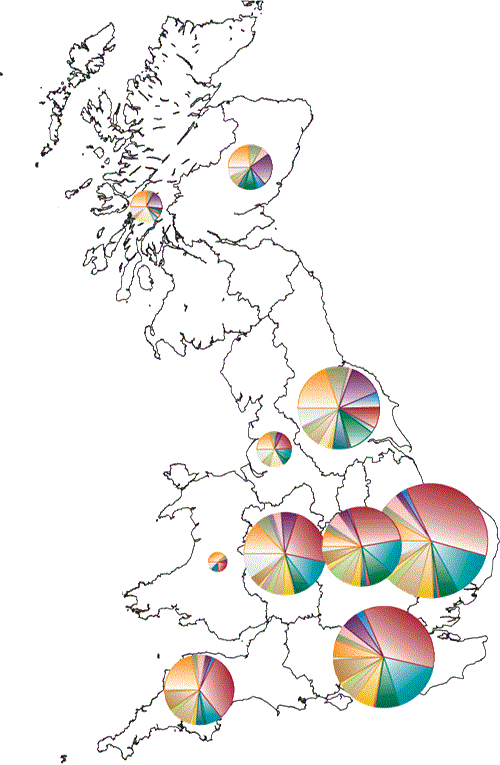Key findings
- 89% of lowland shooting estates surveyed provide supplementary feed to gamebirds through the winter.
- 86% continue feeding until May.
- 80% plant game cover, totalling 3.0% of the arable area.
- The estates surveyed support 17,000 more farmland birds than they would have done without game cover.
In our GIS project, which began in 1999, as well as on upland estates (see page 40) we have looked at game management on lowland estates. Through a survey of our own gamekeeper members and those of the National Gamekeepers' Organisation (NGO), the Moorland Gamekeepers Association (MGA) and the Scottish Gamekeepers' Association (SGA), we have been able to document management carried out for game management. This work has been funded by the Countryside Alliance, the NGO and many anonymous donors.
The survey (which covers 19,480 square kilometres including upland estates) enables us to look at differences in habitat management between groups of estates based on either their location or their quarry species, and sets this habitat management into its biological context. This article covers management carried out on lowland estates, focusing on the provision of food resources in game cover crops.
Winter and spring feeding and game cover crops are important aspects of lowland game management. These additional food sources improve body condition of gamebirds and also attract songbirds. Game crops are principally for the autumn months and gamebird feeders for later in the winter and spring.
Of a total of 1,227 estates that returned our survey forms, 1,088 (89%) provided supplementary food to gamebirds from September to February. 86% continued feeding to May, providing food also for birds like corn buntings, yellowhammers and tree sparrows. The majority of estates (93%) used hoppers, with 72% also providing food via hand-feeding. Nearly 29,000 tonnes of food were distributed by our respondents. The most common food was wheat (87%). Others were barley, maize, proprietary pellets and triticale. Most food was provided in the south and west of England, where most game is released.
Of the estates, 80% planted game crops. Out of a total of 9,773 hectares of game cover crop, the most commonly planted crop was maize or a maize mix. Maize was most common in the south, kale and cereals in the north and kale in the west (see Figure 1). Using the amounts provided by the estates that returned detailed information, we can assess the value of these game cover crops to wintering farmland birds using reported densities of farmland birds on game cover crops and farmland in Britain (from Defra's Science and Research Project BD1606).
Game cover area occupied, on average, 3.0% of the arable area within these estates, but provided a food resource for 14.5% of the farmland birds found within the estates, 4.8 times that provided by standard arable land. On the total arable area within surveyed estates of 318,296 hectares, this is equivalent to 17,000 extra farmland birds finding winter food on the game cover in comparison to what would have been there if this area had been managed as conventional arable land.
Figure 1: Relative area of game cover crops planted by participants in the GIS survey, divided into regions
